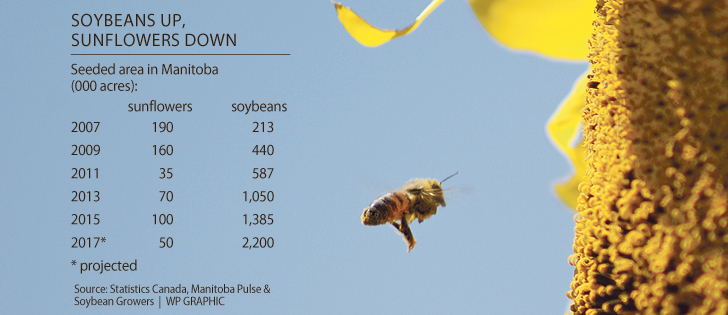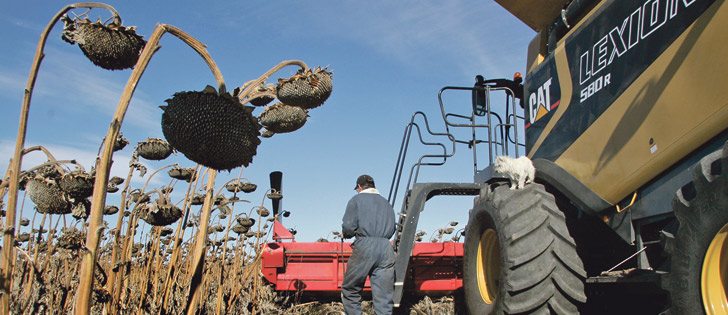Squeezed by soybeans | Soybeans are easy to grow with fewer imputs
Manitoba sunflower acres are projected to drop slightly compared to 2012.
Assuming no seeding delays, producers will likely seed 90,000 to 100,000 acres of sunflowers this year, says a buyer in southern Manitoba.
“Originally I was hoping for an increase but I don’t think that’s going to happen. I think we will be very similar to last year,” said Ben Friesen, commodity purchasing manager with Keystone Grain in Winkler, Man.
In 2012, Manitoba growers seeded about 100,000 acres of sunflowers. Statistics Canada’s seeding intentions, released April 24, suggested acreage would drop to 95,000. That prediction aligns with Friesen’s expectations.
Read Also

Volatile temperatures expected for this winter
DTN is forecasting a lot of temperature variability in the Canadian Prairies this winter. Precipitation should be close to average.
“I don’t think we’re going to make 100,000,” he said.
Similarly, Mike Durand, sales and purchasing manager with Nestibo Agra, a sunflower processor in Deloraine, Man., said acreage would be close to 2012.
The acreage split between black oil sunflowers and confectionery types will likely be similar to last year, he added.
“We should see a minimum of 50 percent black oils.”
In early June, new crop sunflowers were trading at 27 cents per lb. for black oils and 32 cents per lb. for confections.
Despite the price premium, Friesen agreed that oilseed sunflowers would represent half of the total crop.
Confectionery sunflowers are more finicky to grow because the final product must meet stricter standards for the snack food market.
As well, growers must manage disease and insect pressure more carefully with confections, which is why Manitoba producers are turning to black oils, Friesen said.
“There is a little bit less babysitting (compared to) the confecs.”
With provincial area around 100,000 acres or less, Keystone Grain will have to import sunflowers from the U.S. to meet customer demand, Friesen said.
In an ideal world, Manitoba farmers need to seed 50 percent more acres to satisfy the province’s processing industry.
“One hundred (thousand) is not high enough for us. We are the largest exporter (in the province) and we don’t have enough,” Friesen noted. “We would like to see a minimum of a 150,000 acres… with more confecs than oils.”
It’s difficult, though, for sunflowers to compete with the allure of soybeans.
Friesen said soybean prices remain strong and the oilseed is extremely easy to grow.
“You can go out there and plant soybeans, spray with Roundup twice and you’re all done.”
Durand agreed, adding it might be challenging to maintain specialty crop acreage in Manitoba.
“If you don’t like to eat soybeans and corn, 20 years from now that’s all you’ll be able to get (around here),” he said, with a laugh.
“I think every special crop is in the same boat.”
















